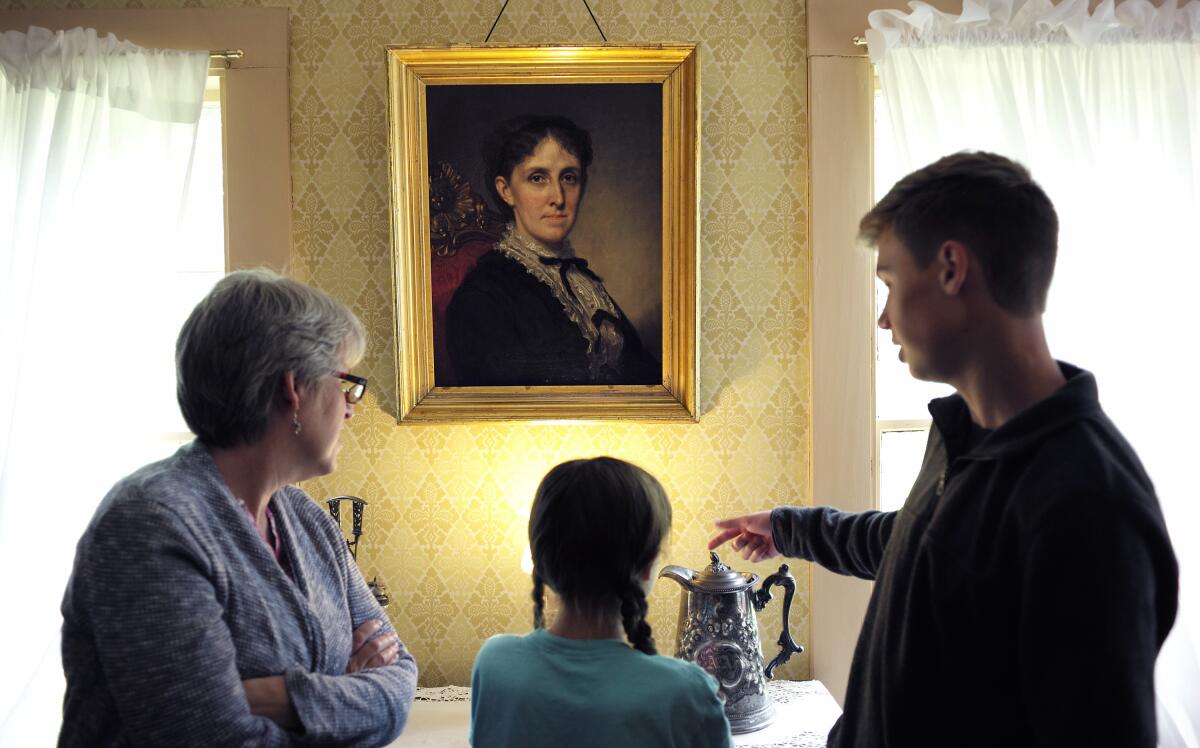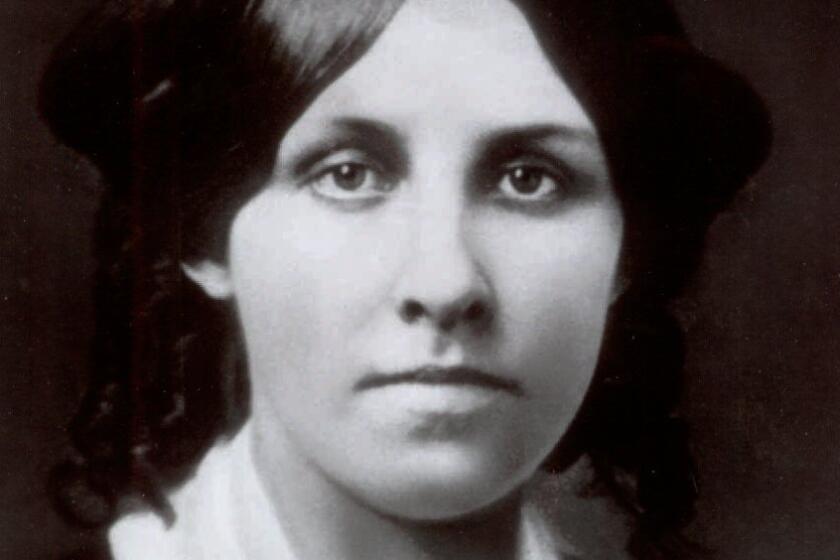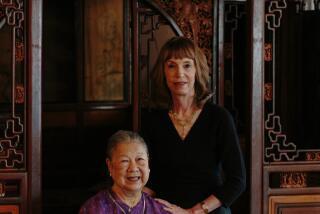Early, unfinished and rarely seen Louisa May Alcott story published

- Share via
NEW YORK — The current issue of Strand Magazine will give readers the chance to discover an obscure, unfinished work by “Little Women” author Louisa May Alcott and to provide their own conclusion to it.
Alcott’s “Aunt Nellie’s Diary” has rarely been seen since she drafted what may have been intended to be a novel or novella, and then set it aside, as a teenager in the late 1840s. The 9,000-word fragment is narrated by the 40-year-old title character and follows her observations as a romantic triangle appears to unfold among her orphaned, fair-haired niece Annie Ellerton, Annie’s dark-haired friend Isabel Loving and the visiting Edward Clifford, “a tall, noble-looking” young man with a complicated past.
Strand managing editor Andrew Gulli found a reference to the manuscript during an online search of Alcott’s archives, stored at Harvard University’s Houghton Library. “Aunt Nellie’s Diary” appears in Strand’s spring issue, delayed until now because of the coronavirus.
“What struck me was the maturity of the work,” says Gulli, who in recent years has published obscure fiction by Ernest Hemingway, Tennessee Williams and many others in his literary quarterly. “Here was Alcott, who was on the cusp of adulthood, creating a complex work, where her main character is a single woman in her 40s, who defies many of the stereotypes of how women were portrayed in mid-19th-century America.”
Because “Aunt Nellie’s Diary” ends with various storylines unresolved, Gulli is inviting readers to complete the narrative. “We’ll post guidelines in the coming weeks,” he says.
Alcott was born in Germantown, Pa., but spent much of her childhood moving around Massachusetts as her father, the educator and philosopher Amos Bronson Alcott, attempted such initiatives as an experimental school and an agrarian commune. Louisa May and her three sisters were employed in various jobs, and the author would speak later of her writing as a release from the family’s ongoing financial struggles.
Part of “Little Women’s” popularity stems from its semiautobiographical nature, but Louisa May Alcott was far more revolutionary and fascinating than even the beloved Jo March.
About the same time she attempted “Aunt Nellie’s Diary,” she worked on her first novel, “The Inheritance,” which remained unpublished until the 1990s.
Alcott’s reputation is defined by “Little Women,” the classic novel from the late 1860s about a New England family that was based on her own childhood. But she also published bloody thrillers, children’s stories and sketches based on her volunteer work as a nurse during the Civil War.
Alcott scholar Daniel Shealy says that “Aunt Nellie’s Diary” reflects what the author called her sentimental phase, her early immersion in such British authors as Charles Dickens and Sir Walter Scott.
“You can see her picking up on some of the romanticized, even sensationalized material from those books. It’s a tough time for her, because the family was short of money, but it’s also a creative time. She’s beginning to develop and mature as a writer,” says Shealy, a professor of English at the University of North Carolina-Charlotte.
“If I had to compare this to ‘Little Women,’ I’d say that you can see her ability to create characters that you can take an interest in. And you see her ability to have several strands of the story going off in different directions, and you’re wondering how she‘s going to tie this all together,” Shealy says. “Clearly, this story is building to a big reveal, and we’re going to learn new things about the characters’ pasts.”
More to Read
Sign up for our Book Club newsletter
Get the latest news, events and more from the Los Angeles Times Book Club, and help us get L.A. reading and talking.
You may occasionally receive promotional content from the Los Angeles Times.








